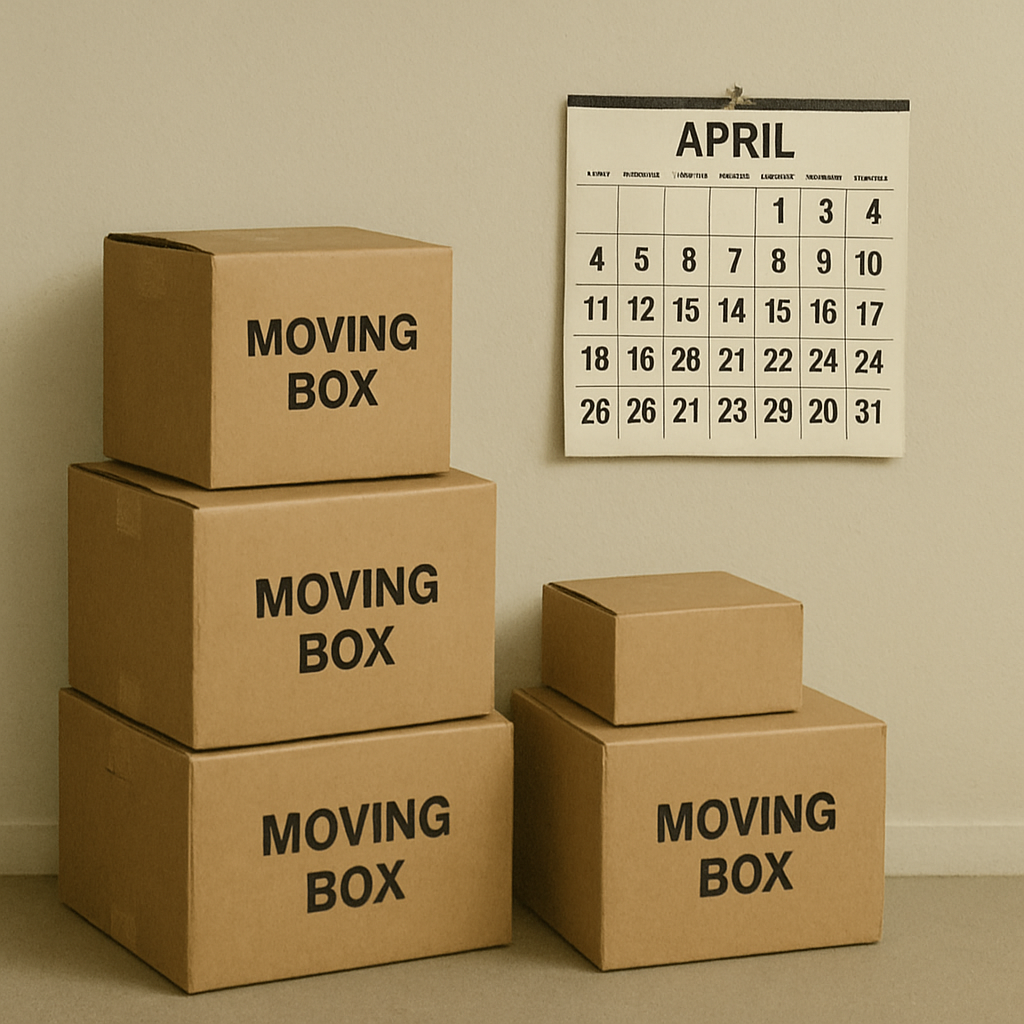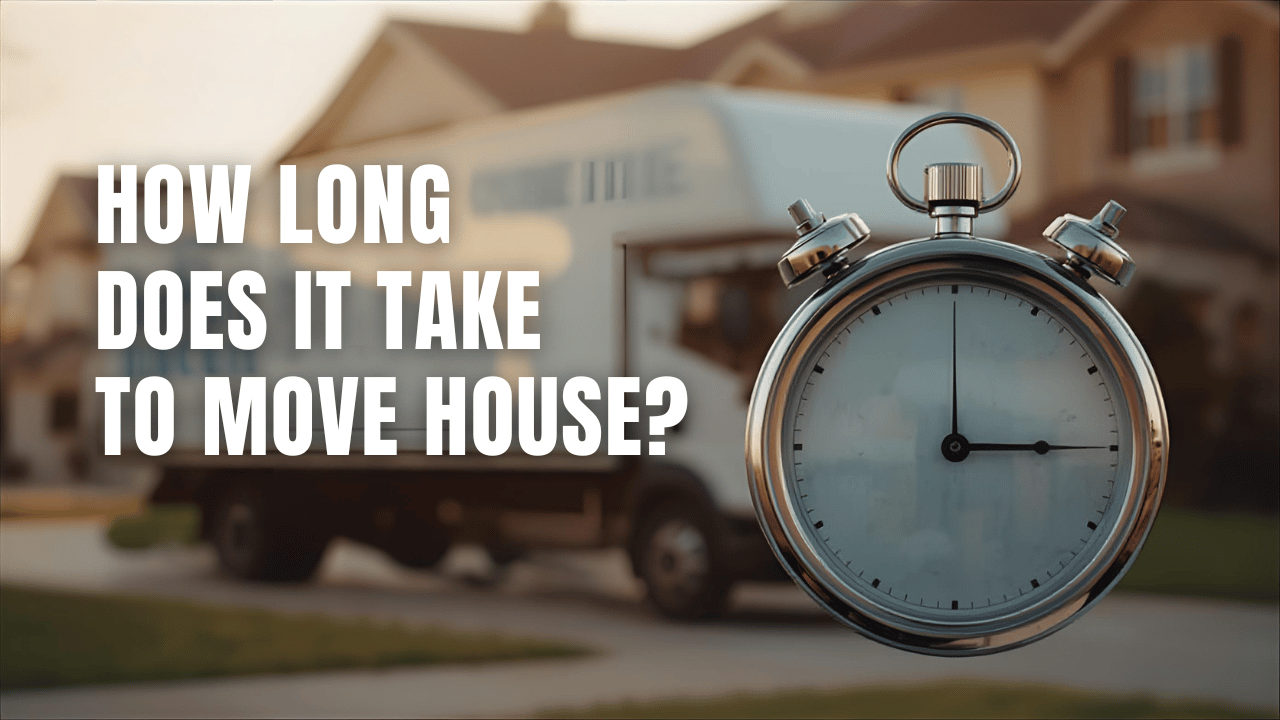Moving House Timeline: How Long It Takes
how long does it take to move house?

The timeline for moving house can vary greatly depending on several factors, such as the size of your home, the distance of the move, and how much preparation you've done beforehand. Here is a general overview of what to expect:
Initial Considerations: Before You Start Planning
Before diving into the planning stage, it’s crucial to consider your reasons for moving and your specific needs. Assessing the urgency of the move can determine how quickly you need to act. Consider the real estate market conditions if you are buying or selling a home, as this may affect your timeline. Additionally, think about any personal circumstances, such as starting a new job or enrolling children in school, which might influence your schedule.
Planning Stage: 8-12 Weeks Before Moving
The moving process begins well before the actual moving day. About 8 to 12 weeks before your move, start planning the logistics. This phase involves:
- Deciding on a Moving Date: Choose a date that gives you enough time to organize everything. Consider any potential conflicts with work or family commitments that could affect your availability during the move.
- Hiring Movers: If you plan to use a moving company, start researching and booking them early to ensure availability. Compare quotes and check reviews to select a reliable service.
- Creating a Moving Budget: Outline your expenses, including moving services, packing supplies, and any other costs you might incur. Be sure to include a buffer for unexpected expenses.
- Decluttering: Go through your belongings and decide what to keep, donate, or sell. This step can significantly reduce the amount of stuff you need to move. Consider hosting a garage sale or using online marketplaces to sell items.
Organizing the Logistics: 6-8 Weeks Before Moving
Once you’ve laid the groundwork, focus on organizing the logistics of your move:
- Contacting Utility Providers: Notify your utility companies of your move date to ensure services are transferred or disconnected appropriately.
- Arranging School Transfers: If you have children, ensure their school records are transferred to their new school and enroll them in new classes if needed.
- Planning Pet Relocation: If you have pets, research how to transport them safely. This might include booking a pet-friendly hotel or researching airline policies for pet travel.
- Securing Important Documents: Gather and organize important documents like passports, birth certificates, and insurance papers. Keep them accessible during the move.
Packing Stage: 6-8 Weeks Before Moving

Once you've decluttered, it's time to start packing:
- Gather Packing Supplies: Stock up on boxes, packing tape, bubble wrap, and markers. Consider eco-friendly packing options to reduce waste.
- Start Packing Non-Essentials: Begin with items you use less frequently, such as seasonal clothing, books, and decorative items. Utilize space-saving techniques like vacuum-sealed bags for clothing.
- Label Boxes: Clearly label each box with its contents and the room it belongs to in your new home. Use a color-coding system to make it easier to identify boxes at a glance.
- Create an Inventory: Keep a detailed list of what you're packing for easy tracking. This can be helpful for insurance purposes and to ensure nothing is lost during the move.
Final Preparations: 2-4 Weeks Before Moving
As your moving day approaches, focus on the final preparations:
- Confirm Moving Details: Double-check your moving date and time with the moving company or anyone helping you. Ensure you have the contact information for the movers and any helpers.
- Notify Important Parties: Change your address with the post office, banks, and any other relevant institutions. Update your address for subscriptions and online shopping accounts.
- Pack Essentials: In the last weeks, pack a box of essentials you'll need immediately upon arrival at your new home, such as toiletries, a change of clothes, and basic kitchen items. Keep this box easily accessible during the move.
- Disassemble Furniture: If possible, start disassembling larger furniture items that need to be moved. Keep screws and small parts in labeled bags taped to the furniture.
Moving Day
The big day has finally arrived. Here's what to expect:
- Supervise the Move: Be present to oversee the loading of your belongings and ensure everything is handled with care. Communicate any special instructions to the movers.
- Final Walkthrough: Before leaving, do a final walkthrough to ensure nothing is left behind. Check all rooms, closets, and storage areas.
- Travel to Your New Home: Depending on the distance, this could take a few hours or most of the day. Plan your travel route and ensure you have essentials for the journey.
Moving Into Your New Home

by Vitaly Gariev (https://unsplash.com/@silverkblack)
Once you've arrived at your new home, the moving process is not quite over. Here's what happens next:
Unpacking and Setting Up: 1-2 Weeks
- Unpack Essentials First: Start with the essentials box you packed earlier to get settled quickly. Having immediate access to necessary items will help ease the transition.
- Organize Room by Room: Focus on one room at a time to avoid feeling overwhelmed. Prioritize areas like the kitchen and bedrooms to establish functionality quickly.
- Connect Utilities: Ensure that water, electricity, internet, and other services are up and running. Contact service providers if there are any issues with connections.
- Update Your Address: Make sure all your mail and services are redirected to your new address. Notify any professional organizations and update your driver's license.
Settling In: 2-4 Weeks
- Explore the Neighborhood: Take some time to familiarize yourself with local amenities, like grocery stores and parks. Discover local restaurants and cafes to enjoy the new area.
- Meet the Neighbors: Introduce yourself to neighbors to start building a community in your new area. Consider hosting a small gathering to get acquainted.
- Decorate and Personalize: Gradually decorate and personalize your space to make it feel like home. Hang artwork, arrange furniture, and add personal touches.
Adapting to Your New Environment
Adjusting to a new home takes time and patience:
- Establish a Routine: Develop a daily routine to help you feel more settled in your new environment. This can include regular walks or setting up a home workspace.
- Get Involved Locally: Join local clubs, groups, or activities to meet new people and establish connections within the community.
- Reflect on the Move: Take time to reflect on the moving process and learn from the experience. Consider what went well and what could be improved for future moves.

Factors Affecting the Moving Timeline
While this timeline provides a general framework, several factors can influence how long it takes to move house:
Distance and Complexity of the Move
- Distance: Local moves are usually quicker than long-distance relocations, which may require additional planning and travel time. Consider whether you’ll need temporary accommodation during the transition.
- Complexity: The complexity of the move can increase with multiple stops, such as moving items to storage or a secondary location before reaching the final destination.
- International Moves: Moving abroad involves additional steps such as customs clearance and shipping logistics, which can extend the timeline.
Size of Home and Volume of Belongings
- Size of Home: Larger homes with more belongings can take longer to pack and move. Consider hiring additional help to expedite the process.
- Specialized Items: Moving items like pianos, artwork, or antiques may require special handling and increase the time needed.
- Downsizing: If you're downsizing, plan extra time for sorting and disposing of items you won’t take with you.
Professional Help and Personal Schedule
- Professional Help: Hiring professional movers can speed up the process, but availability and scheduling can also impact your timeline. Check for peak moving seasons and book well in advance.
- Personal Schedule: Your work and personal commitments can affect how much time you can dedicate to moving tasks. Plan time off work if necessary to focus on the move.
- Assistance from Family and Friends: Enlisting help from friends and family can make the move quicker and more enjoyable, but coordinating schedules may require flexibility.
Tips for a Smooth Move
To make your move as efficient and stress-free as possible, consider these tips:
Planning and Organization
- Start Early: Give yourself plenty of time to plan and execute each step of the moving process. Early preparation reduces last-minute stress.
- Stay Organized: Keep track of all moving-related documents, receipts, and inventory lists in one place. Use digital tools or apps to manage your checklist.
- Enlist Help: Don't hesitate to ask friends or family for assistance, especially on moving day. Assign specific tasks to helpers for efficiency.
- Stay Flexible: Be prepared for unexpected changes and adjust your plans as needed. Flexibility can alleviate stress and ensure a smoother transition.
Packing Strategies
- Use Quality Supplies: Invest in sturdy boxes and packing materials to protect your belongings. Reuse materials where possible to save costs.
- Pack Smart: Use smaller boxes for heavy items and larger boxes for light items. Distribute weight evenly to prevent damage.
- Protect Fragile Items: Wrap fragile items individually and use padding to fill any empty spaces in boxes.
Emotional and Physical Well-being
- Take Breaks: Moving is physically demanding, so schedule regular breaks to rest and recharge. Stay hydrated and eat nutritious meals.
- Manage Stress: Practice stress-relief techniques such as deep breathing or meditation. A positive mindset can help you navigate challenges.
- Celebrate Milestones: Acknowledge accomplishments throughout the moving process to maintain motivation. Celebrate once you’re settled in your new home.
Conclusion
Moving house is a complex process that typically takes several weeks from start to finish. By understanding the moving timeline and preparing in advance, you can ensure a smoother transition into your new home. Remember, every move is unique, so adapt these guidelines to fit your specific situation and needs. With careful planning and organization, you'll be settled into your new home before you know it. Embrace the change and look forward to the new experiences that await in your new environment.
Share this on social media
Read the latest articles




